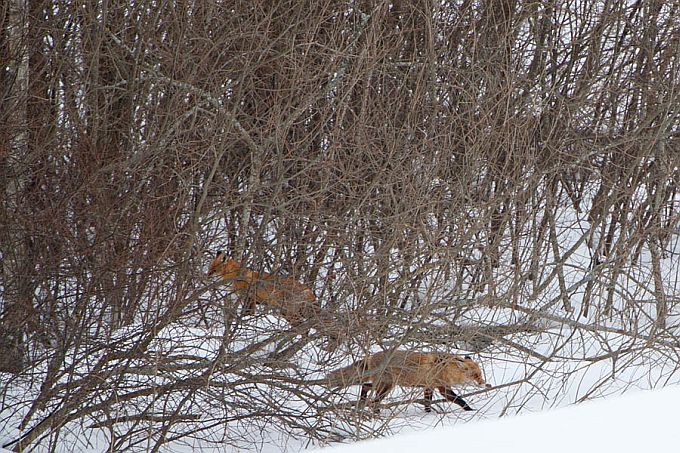Red fox; European fox Punarebane or rebane Vulpes vulpes
Since the end of last summer when the young foxes left the care of the adults they have lived solitarily. They have marked their territories that may be about ten square kilometres in size.
How can the sex of the ”landowner” be determined? If you find urine patches when you walk along a fox’s path during the period with snow cover the matter will become clearer: if the fox has raised its leg at a tree stump, a tussock or shrub it is a male. Females crouch down, a characteristic of canines, and the yellow patch will then be between the hind legs.
For hikers in nature the “trail book” became readable only from February, due to the meagre snow. Some courting pairs scampered around already in January – foxes become more mobile during this period. Their caution decreases and they can be seen in mid-day while ordinarily they only begin to move at dusk.
A pair is active in a fairly large area and both females and males leave their marks: urine tracks are left on rocks, decaying branches, bushes. Even man’s rather modest sense of smell recognizes the rank foxy smell of the secretion from the tail glands. In the territory of the pair occasionally intermittent yapping can be heard.
Meeting the fairy tale animal of our childhood is still a small event. The hearing and the sense of smell of foxes are particularly good – they would not manage otherwise to catch small rodents so successfully. Their vision is quite good too: a fox is not alarmed by an observer standing still, but it reacts instantly on the smallest move. The extraordinary memory of foxes and their almost unbelievable reaction speed are worthy of notice.
Beautiful specimens, not at all afraid of humans, are ever more often noted in cities, not to speak of those moving at the exercise paths in the green belts.
Markings left by a fox pair moving together



